Pitcher Position in Baseball: Roles and Responsibilities Explained
Have you ever marveled at the sheer excitement that erupts in a baseball stadium when the pitcher winds up for a throw? The pitcher stands at the epicenter of the game, a pivotal figure setting the stage for each thrilling play. This isn’t just about hurling a ball; it’s about strategy, skill, and the subtle art of outsmarting the batter.
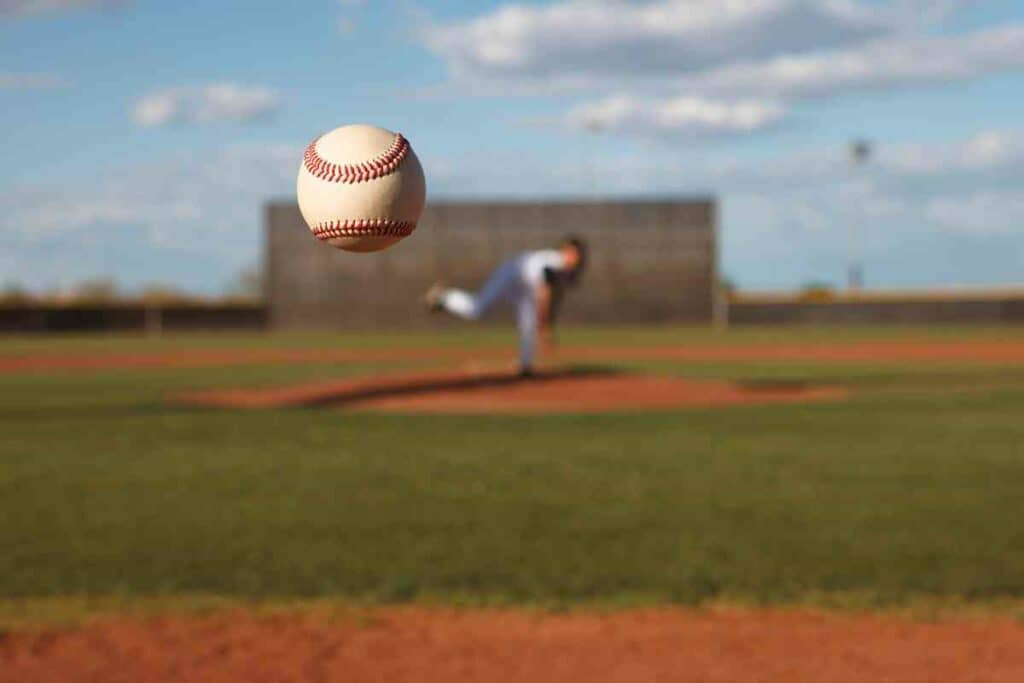
Related Post! What Are The Most Important Positions In Baseball?
What are the responsibilities of a pitcher in baseball?
In baseball, a pitcher’s responsibilities extend beyond throwing strikes. They set the game’s rhythm, strategize with catchers, manage different pitch types, and respond to batters’ weaknesses. Additionally, pitchers play a key defensive role, handling bunts, participating in double plays, and executing pickoff moves to control base runners, integral to the team’s overall strategy.
The pitcher’s mound is more than just a spot on the field—it’s a strategic position impacting every pitch’s velocity, accuracy, and type. Mastering various pitches is a testament to a pitcher’s skill, influencing the game’s outcome. Imagine standing there – it’s not just about physical prowess but also about mental sharpness and an acute understanding of the game’s nuances.
It’s not all about physical strength. A pitcher’s effectiveness intertwines with mental agility and situational awareness. Consider the pitcher’s mound a chessboard, where each move is calculated, blending strategy with athleticism. This role requires the pitcher to be ready for anything, from fielding positions to adapting tactics based on the batter’s profile.
Key Insights for Baseball Aficionados
- Strategic Positioning: The mound is a vantage point for the pitcher, central to delivering strategic and effective pitches.
- Mental and Physical Balance: A pitcher’s success hinges on a harmonious blend of mental acuity and physical skill.
- Adaptability is Key: Navigating through different game situations and batter matchups demands a high degree of flexibility.
Understanding Different Pitcher Roles
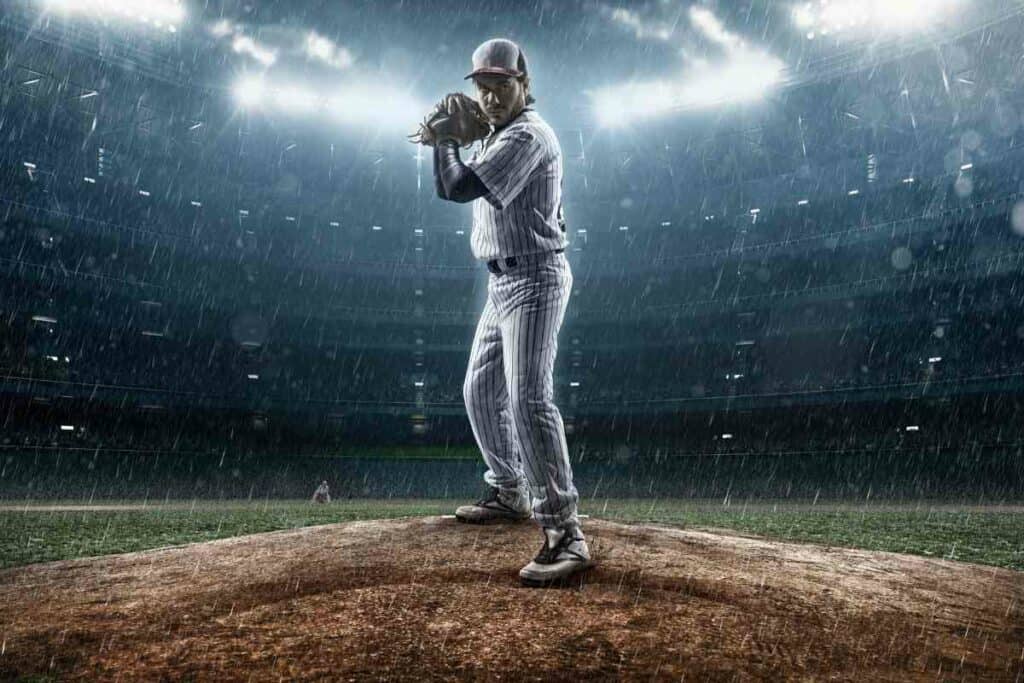
In the realm of baseball, a pitcher’s role varies, adding layers of complexity to the game. Starting pitchers set the game’s rhythm, demonstrating endurance and a wide array of pitches to tackle the lineup multiple times.
In contrast, relief pitchers emerge as the game-changers, specializing in specific scenarios to maintain leads or overturn challenging situations. Each role contributes uniquely to the team’s strategy and success.
Related Post! Role of a Left Fielder In Baseball
The Pitcher’s Playbook
Your pitcher is the maestro of the game, skillfully combining pitch selection, control, and deception. But it’s not just about throwing; it’s about being an integral part of the infield defense, reacting swiftly to field bunts, cover bases, and turn potential scores into outs.
The Power Duo: Pitcher and Catcher
The synergy between you, the pitcher, and your catcher is the game’s linchpin. This partnership, the ‘battery,’ is where strategies are forged and victories are shaped.
Your catcher is more than a teammate; they’re your strategist and confidant, offering insights into each batter’s weaknesses and shaping the game’s flow. This dynamic duo’s communication and trust are pivotal in steering the team towards victory.
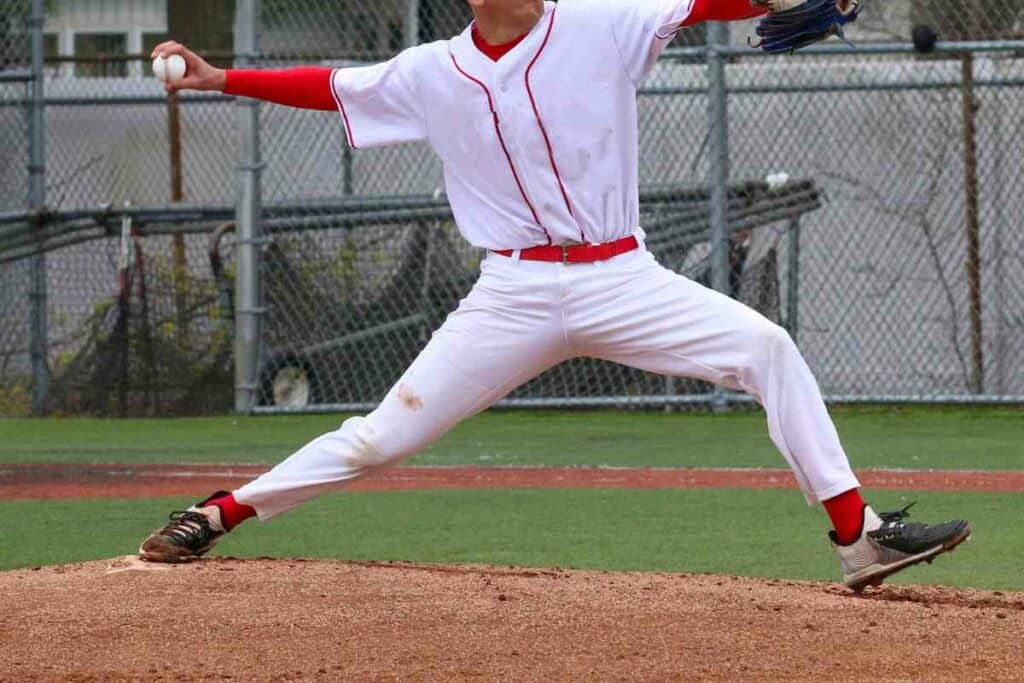
Pitching Techniques and Strategies
Imagine standing on the pitcher’s mound, the game’s pulse in your hands. As a pitcher, your blend of techniques and strategic acumen can befuddle batters and command the field. Knowing when to unleash a specific pitch, deciphering batters’ tendencies, and wisely managing your pitch count are the cornerstones of your dominance.
Crafting a Diverse Pitching Arsenal
To keep batters on their toes, you need a varied array of pitches. Each type serves a unique purpose:
- Fastball: Your speed powerhouse. Unleash it to overpower batters, especially when you’re ahead in the count.
- Curveball: The master of vertical trickery. Ideal for strikeouts, it’s a game-changer when batters expect a faster, straighter trajectory.
- Slider: Your lateral movement marvel. Exceptionally effective against opposite-handed batters, it tempts them into misguided swings.
- Changeup: The ultimate deceiver. It mimics a fastball but arrives with a tantalizing slowness, throwing off the batter’s timing. A versatile choice in any count.
Deciphering the Batter’s Secrets
Your keen observation skills can unlock a batter’s vulnerabilities. Analyze their stance, grip, and swing patterns. If they falter with off-speed pitches, target them with a cunning changeup. Tailor your pitch locations to counter their stance, exploiting their weak spots.
The Chess Game of Setting Up Batters
Pitching is like a strategic chess match. Start with a commanding fastball to set the rhythm, then shatter the batter’s expectations with a curveball or slider. Each pitch should progressively confound the batter, disrupting their ability to anticipate and react effectively.
Managing Your Pitch Count
Staying vigilant over your pitch count is vital for endurance and peak performance. Mixing pitch types can lead to early outs, conserving your energy for later innings. Be cautious with high-stress pitches, like the slider, which can strain your arm more significantly.
Related Post! Role of a Right Fielder In Baseball
The Fusion of Physical Skill and Mental Acuity
Pitching is a symphony of physical skill and mental sharpness. Your pitching mechanics — from the windup to the delivery — are fundamental. Alignment, balance, and a firm pivot foot are key for power generation. The entire motion should be a harmonious blend of movements, leading to a forceful delivery.
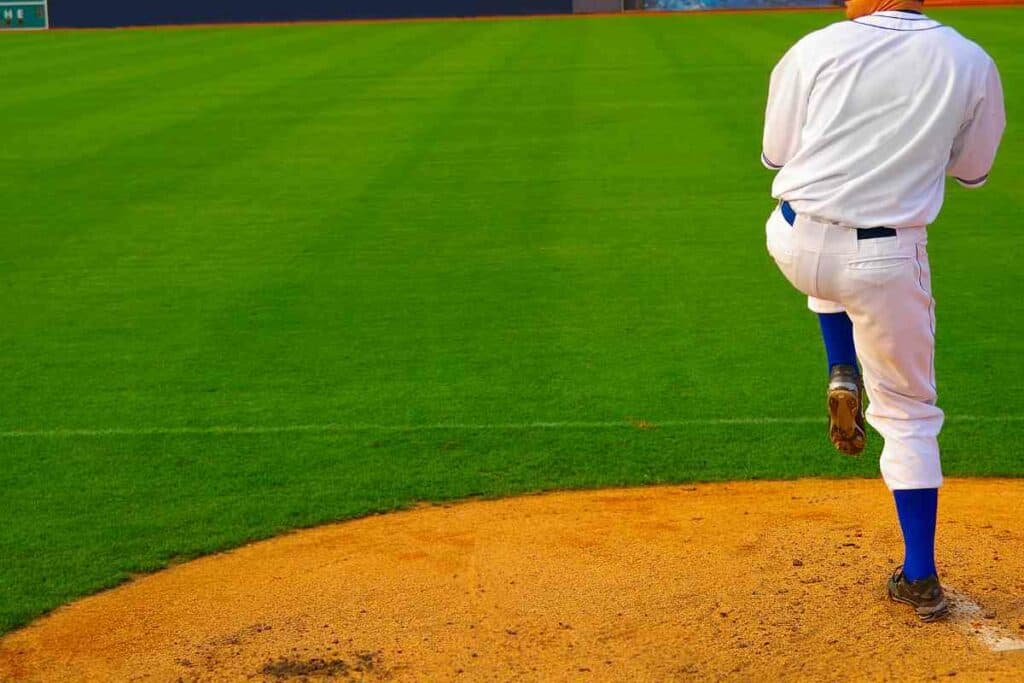
Rhythm and Focus: The Mental Game
Rhythm and focus are your mental tools. A consistent rhythm lets you control the game’s tempo, while mental resilience and quick reflexes ensure precision under pressure.
Conditioning: The Foundation of a Pitcher
Physical conditioning is non-negotiable. A tailored program boosts arm strength, enhances stamina, and aids recovery. Core strength and flexibility are crucial, not just for improving performance but also for reducing injury risks.
Positioning and Defensive Play
In the world of baseball, a pitcher’s role extends far beyond the art of throwing strikes. Picture yourself on the pitcher’s mound, not just as a thrower, but as a pivotal figure in the game’s defensive strategy. Your understanding of positioning and involvement in various defensive plays is key to controlling the game and supporting your team effectively.
Fielding: More Than Just Pitching
Once the ball leaves your hand, your role transforms. You become the ninth fielder, primed to spring into action. Whether it’s covering the mound, fielding ground balls, or deciding when to intervene or leave the play to infielders, your judgment is crucial.
Think of the field as a chessboard; studies on defensive positioning in baseball suggest the importance of a pitcher’s coverage around the mound. Your movements and decisions in these split seconds can shift the game’s momentum.
Double Plays: The Pitcher’s Quick Thinking
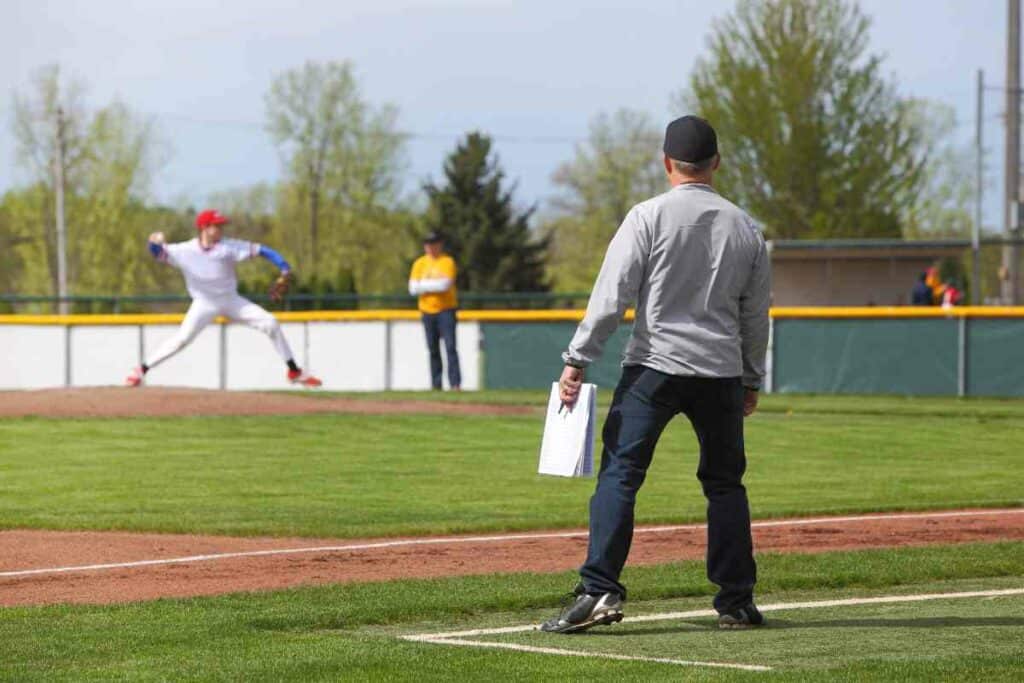
In double plays, especially those initiated by a ground ball, your role is vital. Quick reactions and precise throws can turn a simple play into a game-changing double play.
Whether it’s a “1-6-3” (pitcher to shortstop to first baseman) or a “1-4-3” (pitcher to second baseman to first baseman) double play, your spatial awareness and timing are crucial. It’s about being in sync with your infielders, anticipating the play, and executing it flawlessly.
Navigating Bunts and Steals
Dealing with bunts demands anticipation and agility. Once a bunt is in play, you must move quickly, secure the ball, and throw accurately to thwart the advancing runners. When it comes to stolen bases, your awareness and skill in executing a pickoff move are vital.
Your ability to keep runners close and disrupt their timing plays a strategic role in the game’s defensive aspect, as highlighted in studies on enhancing outfield performance.
As a pitcher, your understanding of these defensive intricacies shapes not only your effectiveness but also the overall team strategy. Your role on the mound is a blend of athleticism, strategy, and quick decision-making, making you a central figure in the game’s dynamics. Remember, every move you make on the mound resonates through the entire field, influencing the game’s outcome and your team’s success.
Frequently Asked Questions
In this section, you’ll find answers to common queries about pitchers in baseball, detailing their roles, skills, and strategic importance in the game.
What are the responsibilities of a pitcher in a baseball game?
In a baseball game, your main responsibility as a pitcher is to deliver the ball to the batter in a way that makes it difficult to hit. You’re tasked with controlling the game’s pace and trying to outwit the batter with a variety of pitches.
How does the pitcher’s mound affect gameplay?
The pitcher’s mound, elevated at 10 inches above the playing field, gives you a gravity advantage, helping to increase the velocity and downward angle of your pitches. This elevation can intensify the challenge for the batter to make good contact with the ball.
What skills are crucial for a successful baseball pitcher?
Key skills for a successful pitcher include exceptional hand-eye coordination, the ability to consistently throw strikes with control and precision, and the stamina to maintain performance throughout a game. Developing a repertoire of pitches can also be a significant asset.
How are pitchers involved in defensive strategies?
As a pitcher, you’re an integral part of your team’s defense. You must field your position after delivering a pitch, be prepared for bunts or comebackers, and have a clear understanding of situational plays to make split-second decisions when fielding the ball.
What is the significance of the number 1 in relation to pitchers?
In scorekeeping, the pitcher is designated by the number 1. This signifies the pitcher’s central role and positioning in defensive player numbering systems, which is a method to record gameplay in a concise and standardized way.
In what ways do pitchers interact with catchers during a game?
Pitchers and catchers communicate constantly to decide on the type of pitches thrown, using hand signals to discuss strategy without the batter knowing their plan. A strong pitcher-catcher relationship is foundational for setting the tone and controlling the flow of the game.
